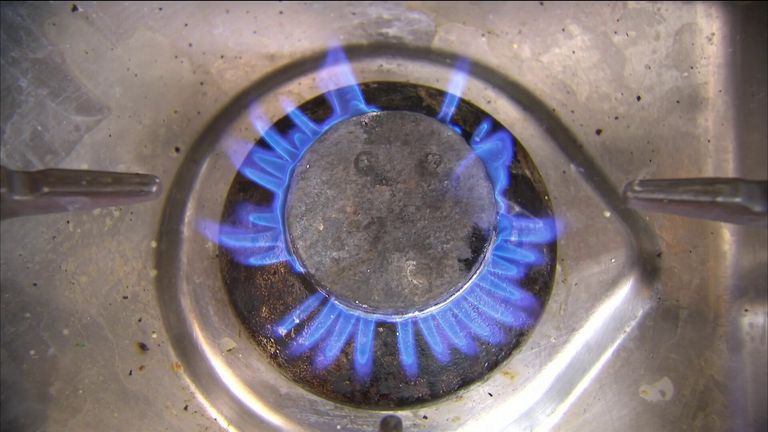Reduced chance of winter power blackouts despite loss of coal back-up – grid operator | Business News
The risk of the lights going out is down this winter, with power margins almost back to levels seen before the energy crisis, according to an eagerly awaited report.
National Grid ESO’s annual winter outlook, which assesses its own readiness for the coldest months of November to March, said it only saw a matter of minutes when the balance between supply and demand would not be met.
It forecast a margin of 7.4% capacity.
That means it expects to have 4.4 gigawatts (GW) of power in hand to meet its reliability standard.
The figure represents an improvement on the 6.3% (3.7 GW) that was expected this time last year when Russia’s war with Ukraine – and sanctions to punish Russia for its invasion – squeezed gas supplies across Europe, forcing energy prices up to unprecedented levels.
Struggles for nuclear output in France last year also placed a greater strain on UK resources.
The latest report concluded, however, that the Grid was still likely to have to issue so-called “margin notices” over winter for periods when the supply-demand balance is especially tight.
These are calls for power generators to provide as much as they can to the network.
That was despite more domestic generation being available, the Grid said, along with increased levels of battery storage and the ability to share power with other nations including France and Belgium.
The operator will also have the Demand Flexibility Service (DFS), introduced last year, to fall back on again as an additional tool.
The scheme will see signatory households and businesses paid for turning off power-intensive appliances at times when power availability is stretched.
The DFS was utilised during a cold snap at the end of last winter following numerous test events that the Grid said had, when combined, saved enough electricity to power nearly 10 million homes.
Craig Dyke, the ESO’s head of national control, said of the blackout risk: “Compared to last year it is almost going back to around where it was before last winter.
“So the risks that we talked about last year, the probability of them occurring, are much, much lower.”
The main challenge facing the Grid this autumn is the loss of five coal-fired power plants that were held in reserve last winter.
They were able to be fired up in readiness to produce electricity when, for example, the wind did not blow but talks with EDF and Drax during the spring failed to produce a deal on new standby contracts.
Because there is no coal back-up to call on if margins become tight, gas and nuclear capacity becomes more essential.
A separate report by National Gas, which operates Britain’s gas grid, said it did not foresee higher exports to Europe this year due to improved storage levels on the continent.
As such, it believed there would be less pressure on domestic supplies and that less gas would be needed to produce electricity due to improved output from other sources, especially wind.
Read more:
Energy price cap falls below £2,000 from October
Support households ahead of ‘inevitable’ winter bills crisis, MPs warn
UK’s largest untapped oil field given go-ahead
Any unexpected loss of wind, gas or nuclear generation means the country would be at the mercy of available power in neighbouring countries through the so-called interconnector network.
There are five in operation, connecting the UK with France, The Netherlands, Belgium and Norway.
A sixth interconnector, Viking Link, is still under construction but is expected to join the UK with Denmark late this year.
Once operational, the two countries will be able to share enough electricity to power up to 1.4 million homes.
Over the course of a year, the UK tends to import more power than it exports through these arrangements.
This can add to bills depending on the power sources utilised, though the UK’s leading position in wind power can also work in its favour.
The fact remains, however, that energy bills remain around £1,000 per year higher than typical pre-pandemic levels.
A household paying by direct debit for gas and electricity will face an average annual charge of £1,923 from October to December, a fall of about £150 on the previous three months.
Experts warn that the loss of universal government support for bills will mean many households will be worse off this winter than last, particularly when industry forecasts suggest the average bill will be back above £2,000 when the next price cap adjustment is made for January-March.

